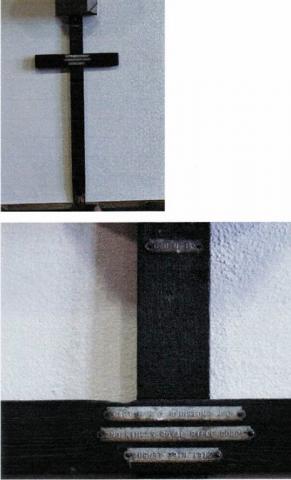Died of wounds aged 21
Buried in Abbeville Communal Cemetery, Plot VI A 18
Frederick John Lawrie was the only son of Charles Lawrie Johnstone of Gelston Castle, Kirkcudbrightshire and, later, of Drum Park, Irongray, Castle Douglas, Dumfriesshire, and his wife.

He was educated at Eton where he was a member of the cricket and football teams, an expert angler and a very good shot. Whilst at school, he joined the OTC and went from Eton straight to Sandhurst. He was gazetted 2nd Lieutenant in the 2nd Battalion, the King’s Royal Rifle Corps on 11 November 1914. He was promoted Lieutenant, and Temporary Captain on 7 October 1915.
He served at La Bassee, Loos, Nueve Chapelle, Festubert and the Somme. He was wounded at High Wood, after initial Field Dressing Station treatment, he was moved to the Military Hospital in Abbeville where he died of his wounds.
On 20 October 1916 he was, posthumously, awarded the Military Cross “For conspicuous gallantry in action. During heavy fighting he assumed command of two other Companies as well as his own, organised a successful counter attack, kept up the supply of ammunition and bombs, and did fine work generally.”
He is commemorated on the Crossmichael War Memorial. His original wooden Grave Cross is in St Ninian’s Episcopal Church, Castle Douglas.
In November 1913 a Sunbeam 3 litre was registered in his name. After his death, his father almost died whilst driving it. His mother ordered the car to be destroyed as she felt that it had a jinx. It was burned and buried in the orchard at Drum Park. The Johnstone family died out, and the car lay forgotten until 1971 when a plough turned it up. It was restored and is now in the Grampian Transport Museum at Alford, Aberdeenshire.

